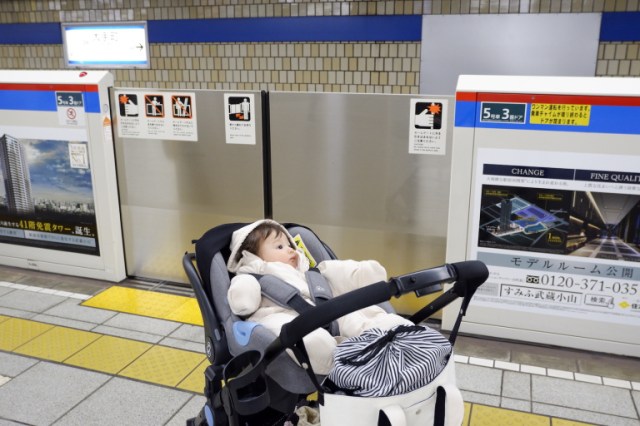
Our reporter worried she and her baby would be harassed on the trains, but what she experienced was quite unexpected.
When you live overseas for a long time and come back to your home country for a visit, the things that used to be so familiar to you now might seem strange. For example, after living in Japan for nearly six years, going back to the States and seeing the state of American convenience store food was a supreme shock. Lukewarm hot dogs and taquitos with suspicious contents? No thanks. Where are the oden and the meat beans and the juicy fried chicken??
Our Japanese-language reporter Sweetsholic expected a similar experience recently when she returned to visit Japan with her baby. She’s been living in the city of Toulouse in southern France for years with her French husband, and when she was getting ready to bring her six-month-old to Japan for a visit, she was most worried about how she was going to get around Tokyo with her baby.
In France, no matter how big strollers are, getting around on public transport is easy. Not only are there open seats for parents with strollers on the trains, but navigating the subway stations is also convenient, with elevators taking you directly from the ticket gates to the platform.
Considering that Japanese train passengers are often disdainful towards parents with strollers on trains, Sweetsholic was nervous. Were her worries unfounded? Here are four things she felt and experienced while she was travelling with her baby and stroller during her three-week trip in Japan.
1. Some Japanese trains have designated stroller areas
Luckily, on the Tokyo Metro, the subway network that Sweetsholic most used, there was a specific space on the car where she could set her stroller without folding it up. There were usually people standing there when she got on, but more often than not they would move to make room for her when she approached.
On the subway cars in Toulouse, there is no such a designated space for strollers, but there are two or three open spaces that anyone could use, so she usually puts her stroller there. People also often give up their seats for the elderly, pregnant women, and people with strollers and children, even in the areas not designated as priority seating (this may not be something that happens in all of France, admits Sweetsholic, as the south of France is a very laid-back area).
2. There are not enough elevators in Japanese stations
On the other hand, the one thing that really bothered her about riding the Japanese subway with her daughter was that there are very few elevators in the stations, especially compared to French stations. Sometimes the elevator would be on the opposite side of the platform from the ticket gates, so you have to walk all the way from one end of the platform to the other to get to the elevator, and then, once you’ve taken it up to the floor with the gates, you have to walk all the way back to exit the station. When you have to change trains, it’s a real nightmare!
It’s especially hard in stations that are really busy and really big, like Shinjuku Station. Sometimes the lines for the elevators there are really long, which makes traveling on a tight schedule very difficult. Sweetsholic mostly avoided peak hours, but even then the lines were horrendous. She couldn’t imagine what it would be like during rush hour.
▼ A passageway in Shinjuku Sanchome station. Imagine pushing a stroller all the way down there only to find there’s no elevator!
Toulouse’s trains, by the way, also get very crowded during rush hour, so she generally avoids taking her baby on the train then, too.
3. People in Japan were much more helpful than she expected
There was more than one occasion when Sweetsholic just couldn’t find the elevator, and ended up picking up her stroller, with her baby inside, and carrying it up or down the stairs. Once, just as she was thinking what a pain it was, an older man offered to carry the stroller for her. At another station, a fellow female passenger also offered to help her carry her stroller down a particularly long set of stairs. In fact, there were many women who offered to help her at stations all around the city.
She was very touched that not only station attendants but other passengers were so willing to help her, even without her asking.
4. Many people on Japanese trains helped to comfort her baby
One other thing that Sweetsholic was worried about was what would happen if her baby started to cry on the train. Sweetsholic had heard that Japanese people are often rude to parents when that happens, so she hoped beyond hope that her daughter would be well-behaved.
▼ “How dare that baby act like a baby?!”
One day Sweetsholic’s fears came true when her usually happy daughter started to get fussy on a very crowded train. She started to cry, but they were very close to the station where they were going to get off. Sweetsholic was about to panic, until an older lady standing nearby started to comfort the baby, saying, “You’re such a good little girl! You’re doing so well. You’re almost there!” After that Sweetsholic felt the atmosphere relax, so she felt so grateful for the older woman.
In the end, Sweetsholic actually felt that riding the trains in Japan with a baby was not nearly as bad as she thought. In the news and on social media you hear horror stories of passengers kicking strollers and heckling already frazzled parents, so Sweetsholic had been really worried about bringing her large western-sized stroller on Japanese public transportation.
But on the contrary, she had been touched by how helpful people had been. Perhaps she’d had good timing, but she was so thankful for all of the of people at the stations who helped her with her stroller and who had smiling interactions with her daughter, and she decided that she, too, would make an effort to help if she saw a fellow parent struggling.
Now, if only they could do something about the lack of elevators…
Top image ©SoraNews24
Insert images: Pakutaso (1, 2, 3, 4)
● Want to hear about SoraNews24’s latest articles as soon as they’re published? Follow us on Facebook and Twitter!
[ Read in Japanese ]

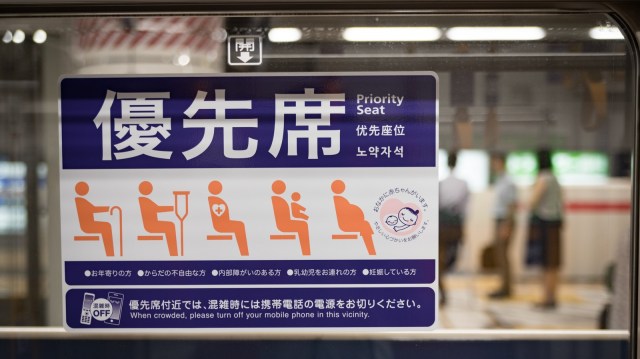
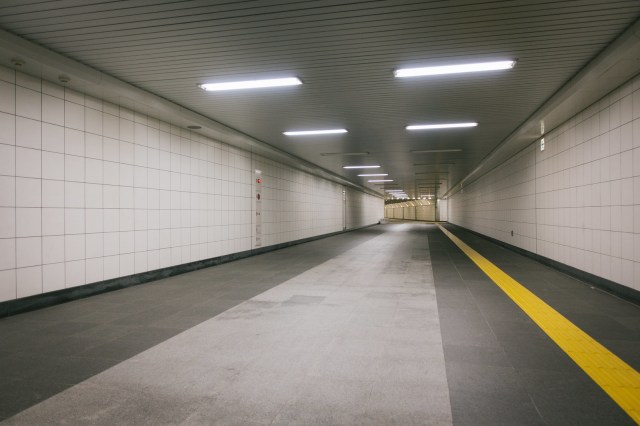
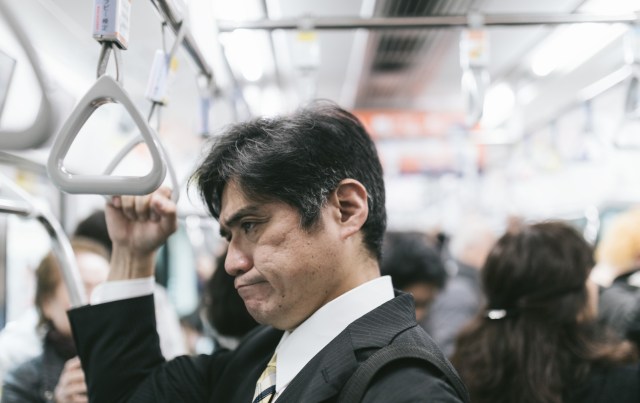
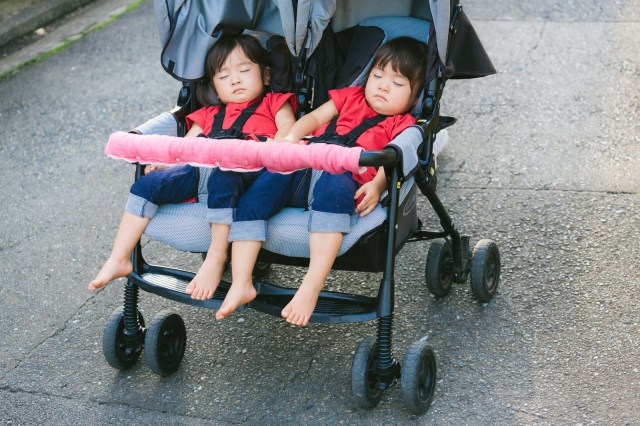
 What’s it like traversing Tokyo using only wheelchair accessible routes?
What’s it like traversing Tokyo using only wheelchair accessible routes? Train company asks parents with baby strollers to be polite to other passengers, sparks backlash
Train company asks parents with baby strollers to be polite to other passengers, sparks backlash With Japan’s day care shortage, how hard is it to bring your baby to work with you? We experiment
With Japan’s day care shortage, how hard is it to bring your baby to work with you? We experiment Luxurious Sleeping Beauty Taxi service awaits all princesses in Tokyo
Luxurious Sleeping Beauty Taxi service awaits all princesses in Tokyo Distressed moms and dads on Japanese trains getting help from child assistance volunteer badges
Distressed moms and dads on Japanese trains getting help from child assistance volunteer badges Foreigner’s request for help in Tokyo makes us sad for the state of society
Foreigner’s request for help in Tokyo makes us sad for the state of society Japanese city loses residents’ personal data, which was on paper being transported on a windy day
Japanese city loses residents’ personal data, which was on paper being transported on a windy day Harajuku Station’s beautiful old wooden building is set to return, with a new complex around it
Harajuku Station’s beautiful old wooden building is set to return, with a new complex around it New private rooms on Tokaido Shinkansen change the way we travel from Tokyo to Kyoto
New private rooms on Tokaido Shinkansen change the way we travel from Tokyo to Kyoto Starbucks Japan releases new mugs and gifts for Mother’s Day
Starbucks Japan releases new mugs and gifts for Mother’s Day Akihabara pop-up shop sells goods made by Japanese prison inmates
Akihabara pop-up shop sells goods made by Japanese prison inmates We tried Korea’s way-too-big King Tonkatsu Burger at Lotteria 【Taste Test】
We tried Korea’s way-too-big King Tonkatsu Burger at Lotteria 【Taste Test】 Haku is…Chihiro’s dead brother? Studio Ghibli fans blown away by Spirited Away theory
Haku is…Chihiro’s dead brother? Studio Ghibli fans blown away by Spirited Away theory Ghibli Park now selling “Grilled Frogs” from food cart in Valley of Witches
Ghibli Park now selling “Grilled Frogs” from food cart in Valley of Witches This is the one and only kakuni pork bowl restaurant in Tokyo, and it’s amazing
This is the one and only kakuni pork bowl restaurant in Tokyo, and it’s amazing McDonald’s new Happy Meals offer up cute and practical Sanrio lifestyle goods
McDonald’s new Happy Meals offer up cute and practical Sanrio lifestyle goods Japanese ramen restaurants under pressure from new yen banknotes
Japanese ramen restaurants under pressure from new yen banknotes French Fries Bread in Tokyo’s Shibuya becomes a hit on social media
French Fries Bread in Tokyo’s Shibuya becomes a hit on social media Studio Ghibli releases new action figures featuring Nausicaä of the Valley of the Wind characters
Studio Ghibli releases new action figures featuring Nausicaä of the Valley of the Wind characters Red light district sushi restaurant in Tokyo shows us just how wrong we were about it
Red light district sushi restaurant in Tokyo shows us just how wrong we were about it Tokyo Tsukiji fish market site to be redeveloped with 50,000-seat stadium, hotel, shopping center
Tokyo Tsukiji fish market site to be redeveloped with 50,000-seat stadium, hotel, shopping center All-you-can-drink Starbucks and amazing views part of Tokyo’s new 170 meter-high sky lounge
All-you-can-drink Starbucks and amazing views part of Tokyo’s new 170 meter-high sky lounge Beautiful Ghibli sealing wax kits let you create accessories and elegant letter decorations【Pics】
Beautiful Ghibli sealing wax kits let you create accessories and elegant letter decorations【Pics】 Studio Ghibli releases Kiki’s Delivery Service chocolate cake pouches in Japan
Studio Ghibli releases Kiki’s Delivery Service chocolate cake pouches in Japan New definition of “Japanese whiskey” goes into effect to prevent fakes from fooling overseas buyers
New definition of “Japanese whiskey” goes into effect to prevent fakes from fooling overseas buyers Our Japanese reporter visits Costco in the U.S., finds super American and very Japanese things
Our Japanese reporter visits Costco in the U.S., finds super American and very Japanese things Studio Ghibli unveils Mother’s Day gift set that captures the love in My Neighbour Totoro
Studio Ghibli unveils Mother’s Day gift set that captures the love in My Neighbour Totoro More foreign tourists than ever before in history visited Japan last month
More foreign tourists than ever before in history visited Japan last month New Pokémon cakes let you eat your way through Pikachu and all the Eevee evolutions
New Pokémon cakes let you eat your way through Pikachu and all the Eevee evolutions Sales of Japan’s most convenient train ticket/shopping payment cards suspended indefinitely
Sales of Japan’s most convenient train ticket/shopping payment cards suspended indefinitely Sold-out Studio Ghibli desktop humidifiers are back so Totoro can help you through the dry season
Sold-out Studio Ghibli desktop humidifiers are back so Totoro can help you through the dry season Japanese government to make first change to romanization spelling rules since the 1950s
Japanese government to make first change to romanization spelling rules since the 1950s Ghibli founders Toshio Suzuki and Hayao Miyazaki contribute to Japanese whisky Totoro label design
Ghibli founders Toshio Suzuki and Hayao Miyazaki contribute to Japanese whisky Totoro label design Doraemon found buried at sea as scene from 1993 anime becomes real life【Photos】
Doraemon found buried at sea as scene from 1993 anime becomes real life【Photos】 Tokyo’s most famous Starbucks is closed
Tokyo’s most famous Starbucks is closed One Piece characters’ nationalities revealed, but fans have mixed opinions
One Piece characters’ nationalities revealed, but fans have mixed opinions We asked a Uniqlo employee what four things we should buy and their suggestions didn’t disappoint
We asked a Uniqlo employee what four things we should buy and their suggestions didn’t disappoint Princesses, fruits, and blacksmiths: Study reveals the 30 most unusual family names in Japan
Princesses, fruits, and blacksmiths: Study reveals the 30 most unusual family names in Japan That time a stranger gave us money on a Japanese train
That time a stranger gave us money on a Japanese train “Demon manju”: A low-prep recipe for a delicious regional snack made from sweet potato
“Demon manju”: A low-prep recipe for a delicious regional snack made from sweet potato Five things about New York that surprised our Japanese reporter
Five things about New York that surprised our Japanese reporter End-of-the-line exploring in Japan: Visiting Hashimoto Station
End-of-the-line exploring in Japan: Visiting Hashimoto Station How to cancel a floor on a Japanese elevator
How to cancel a floor on a Japanese elevator Clever ad publicly shames commuters in real-time for “smartphone walking” in train station【Video】
Clever ad publicly shames commuters in real-time for “smartphone walking” in train station【Video】 This unstaffed Japanese train station is like a Ghibli anime come to life
This unstaffed Japanese train station is like a Ghibli anime come to life Paris Hilton gets stuck in a crowded elevator in China, praises her savior【Video】
Paris Hilton gets stuck in a crowded elevator in China, praises her savior【Video】 Disturbing video shows man hitting woman for crossing her legs on Japanese train【Video】
Disturbing video shows man hitting woman for crossing her legs on Japanese train【Video】 Japan Travel: What it’s like to go on a solo journey on a Japanese restaurant train
Japan Travel: What it’s like to go on a solo journey on a Japanese restaurant train Tokyo Metro adds platform display showing where least crowded parts of the next train will be
Tokyo Metro adds platform display showing where least crowded parts of the next train will be We rode 11 hours on a sleeper train from Shanghai to Shenzhen and learned a valuable lesson
We rode 11 hours on a sleeper train from Shanghai to Shenzhen and learned a valuable lesson 6 surprising things about having a baby in Japan
6 surprising things about having a baby in Japan Our reporter orders food from Uber Eats, falls in love, learns that fate works in mysterious ways
Our reporter orders food from Uber Eats, falls in love, learns that fate works in mysterious ways Woman kills self jumping onto train tracks, delay causes conductor to jump off tracks at other station
Woman kills self jumping onto train tracks, delay causes conductor to jump off tracks at other station
Leave a Reply